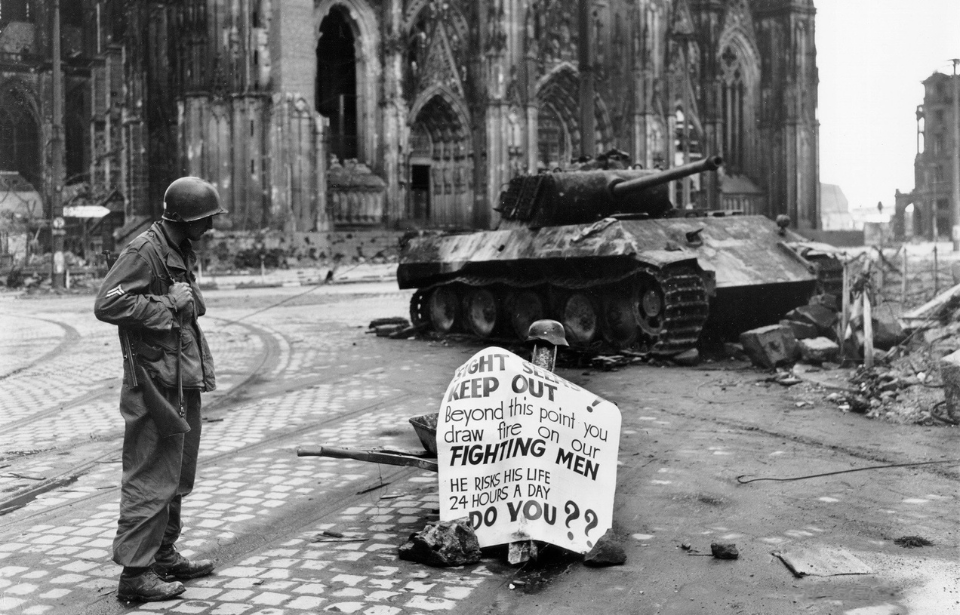After the resounding triumph of D-Day and the Allies advancing through occupied territories, the inevitable end of the Second World War loomed ever closer. It was time to take the fight to the heart of Germany and confront the enemy on their home turf. This came to fruition during the Battle of Cologne, where American and German forces clashed in a historic showdown. Among the most riveting engagements was a tank duel that saw a Panther square off against an M26 Pershing.
Operation Lumberjack
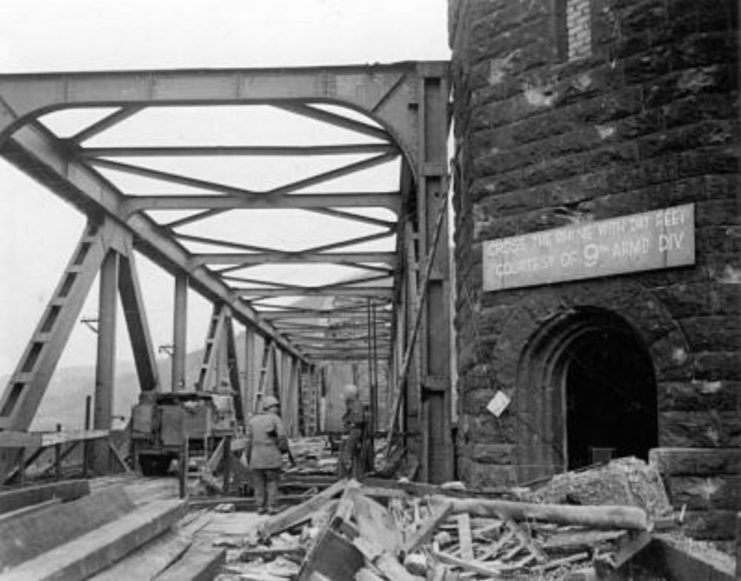
Crucial to the Allied advance into Germany was the strategic movement of troops across the Rhine, seeking to establish a foothold along its banks. Operation Lumberjack, initiated by the First US Army, aimed to achieve this objective, with the ultimate goal of pushing further into Germany and seizing major cities still under enemy control, including Cologne.
The ancient city, uniquely situated astride the Rhine, posed a distinctive challenge. Assigned the task of securing the western side, the 3rd and 9th Armored Divisions, alongside the 9th and 104th Infantry Divisions, initiated their advance toward their target on March 1, 1945.
Preceding the arrival of American forces and the ensuing battle, Cologne endured its final air raid, inflicting additional damage upon the already-devastated city.
American advance into Cologne
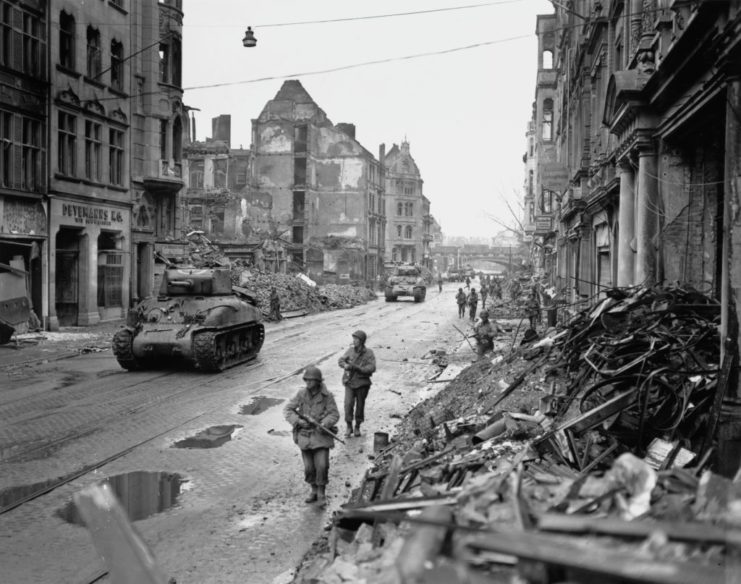
While much of Cologne lay in ruins, its magnificent cathedral remained standing. On March 3, Allied aircraft dropped pamphlets advising citizens to stay in the city, assuring them that they had nothing to fear from the approaching troops.
Cologne was among the first cities drawn into the conflict during Operation Lumberjack, with the Americans arriving on March 5, 1945, from three different directions. Leading the attack from the northwest was Maj. Gen. Maurice Rose with the 3rd Armored Division acting as the vanguard.
The Armored Divisions closely coordinated with infantry units, providing essential cover for the soldiers. This collaboration allowed them to effectively clear out enemies on foot and gather valuable intelligence.
Panthers, M4 Shermans and M26 Pershings roam the streets
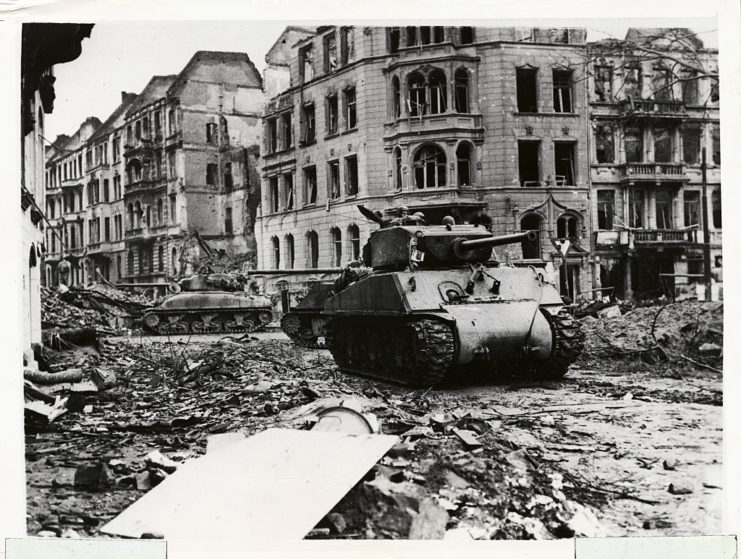
While the majority of the Germans had given into their inevitable loss, members of the 9th Panzer, 3rd Panzergrenadier and 363rd Volksgrenadier Divisions were determined to continue fighting. This didn’t stop the American advance. By March 6, 1945, the 3rd Armored Division had broken through much of the German defenses and into Cologne’s city center, where the still-standing cathedral rose into the sky.
Strategically located nearby, and completely out of sight of the Allies, was a German Panther tank, whose crew had prepared an ambush. Around them, the tanks of the 3rd Armored Division were clearing each street of combatants. Made up predominantly of M4 Shermans, they’d been struggling, as their armor couldn’t withstand German weaponry – a problem they’d been dealing with for years.
In response to this, the Americans had commissioned a new tank, the M26 Pershing, which had double the armor of the Sherman. It was far superior, but hadn’t seen much combat yet, something that would be a big advantage during the Battle of Cologne’s tank duel.
A German Panther takes out two American M4 Shermans
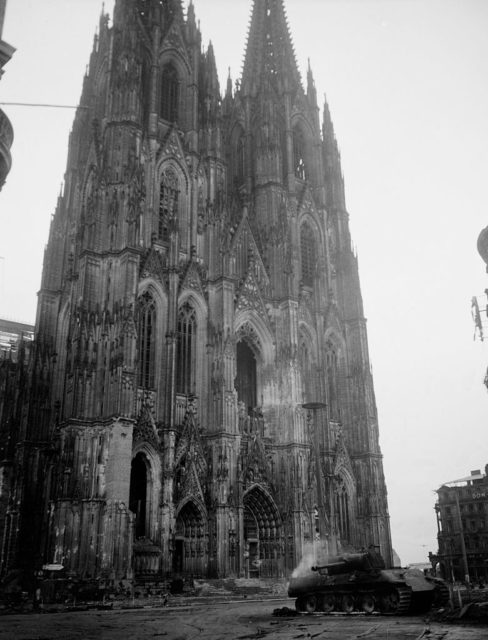
During the Battle of Cologne, a gripping tank duel ensued when two tanks from Easy Company, 3rd Armored Division found themselves navigating a street obstructed by debris. They radioed for a bulldozer to clear their path, unknowingly exposing themselves to a lurking Panther tank.
Seizing the moment, the Germans opened fire on the leading Sherman, swiftly disabling it. The second tank attempted a quick retreat, but its tracks were crippled by German fire, halting its escape. Just before the fatal shot, the crew managed to evacuate. With both targets eliminated, the Panther awaited the next unsuspecting Sherman, only to be surprised by the approach of a Pershing.
Having intercepted radio chatter about the ongoing engagement, Staff Sgt. Robert Earley of the Pershing crew decided to flank the Panther from a side street. This cunning move prompted the German commander to anticipate an attack from that direction, leading him to instruct his gunner to adjust the turret’s position in anticipation of the impending threat.
Panther versus M26 Pershing
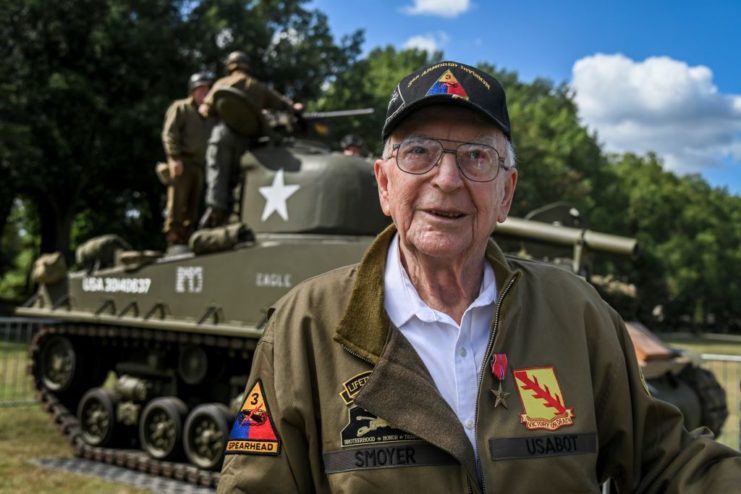
The Pershing gunner, Cpl. Clarence Smoyer, was told, “Shoot wherever you want. He’s just sitting there like he owns the place.” That’s exactly what he did. As they rounded the corner, they saw the Panther’s gun pointed right at them. Smoyer let off his shot, striking the enemy tank on its right side, yet the Germans didn’t do the same. Smoyer subsequently let off another two rounds, hitting just below the Panther’s gun and the spot between the tank’s upper hull and wheels.
Despite being hit three times, the German tank crew managed to escape. The Americans later learned the Panther commander had never seen a Pershing before and had assumed it was one of their own. As such, he’d told his men to hold fire.
What exactly makes this duel more famous than any other alteration of the war? The entire engagement was caught on video. Tech. Sgt. Jim Bates had been asked to accompany the Pershing crew that day, and he recorded the encounter between the Americans and the Panther, as well as their reactions afterward.
Want War History Online‘s content sent directly to your inbox? Sign up for our newsletter here!
As for the tank crew, it wasn’t until 2019 that Pfc. Homer “Smokey” Davis, Cpl. John DeRiggi, bow gunner William “Woody” McVey and, of course, Clarence Smoyer were awarded Bronze Stars. Smoyer was the only member of “Eagle 7” still alive, so the families of his comrades accepted the medals on their behalf.
